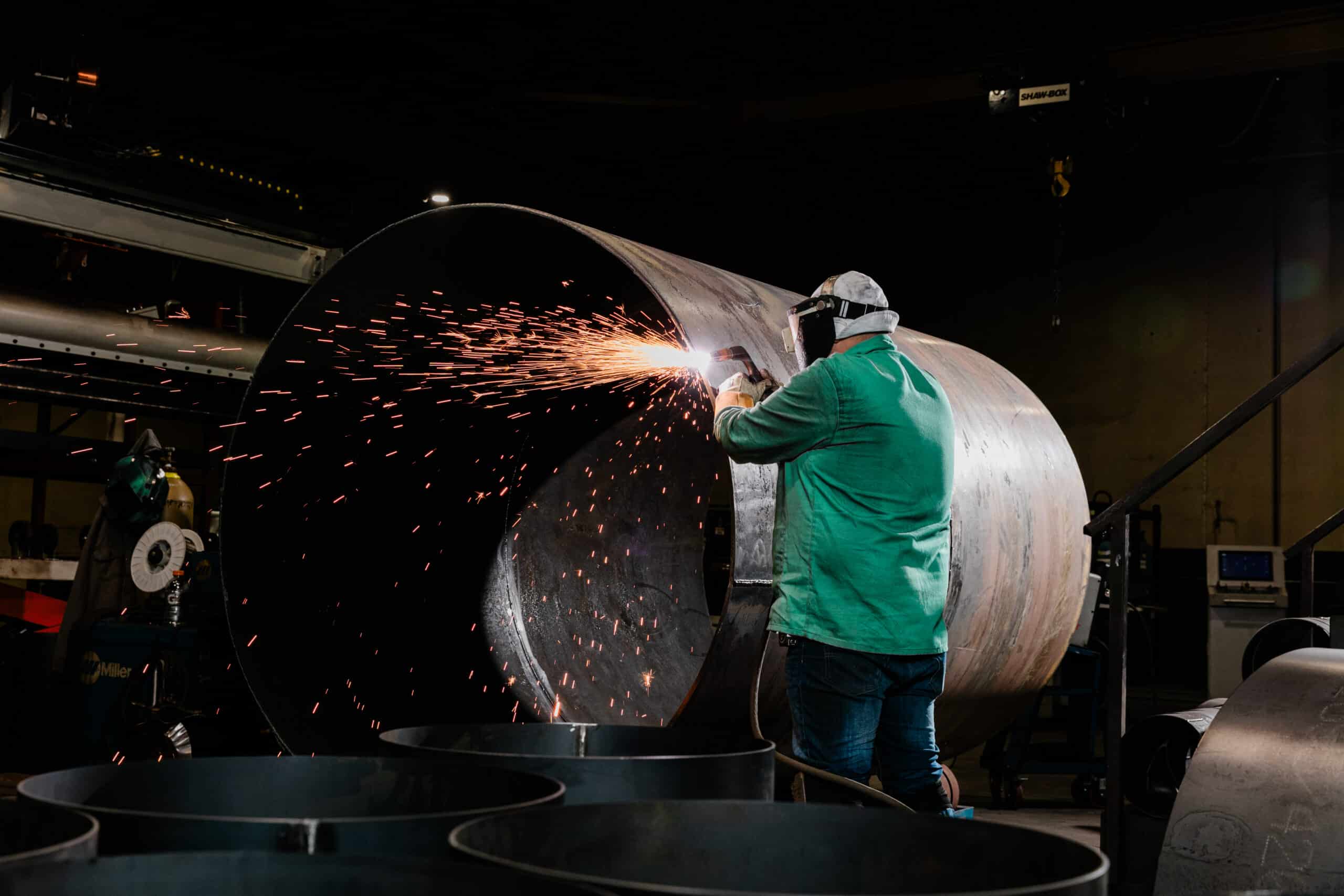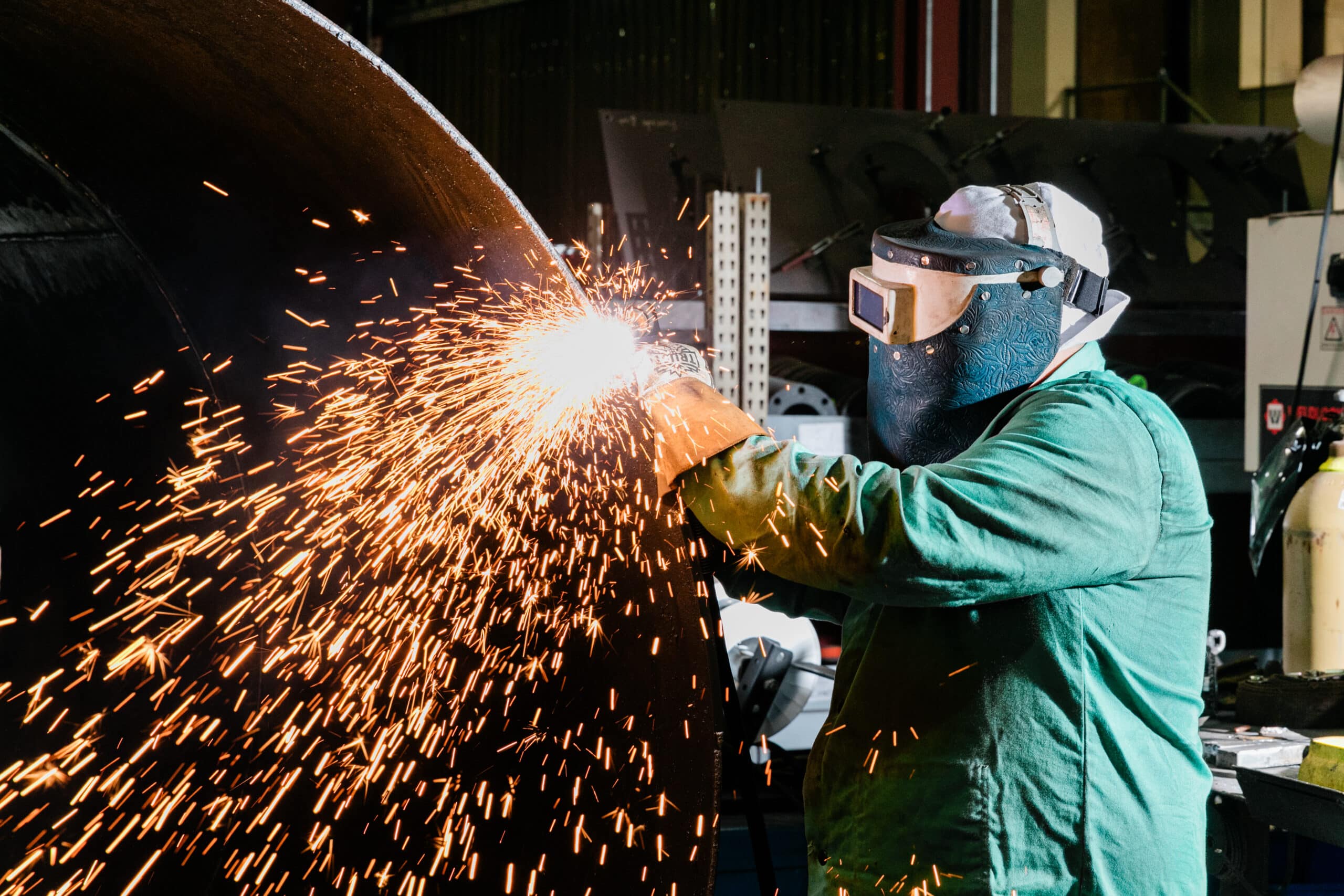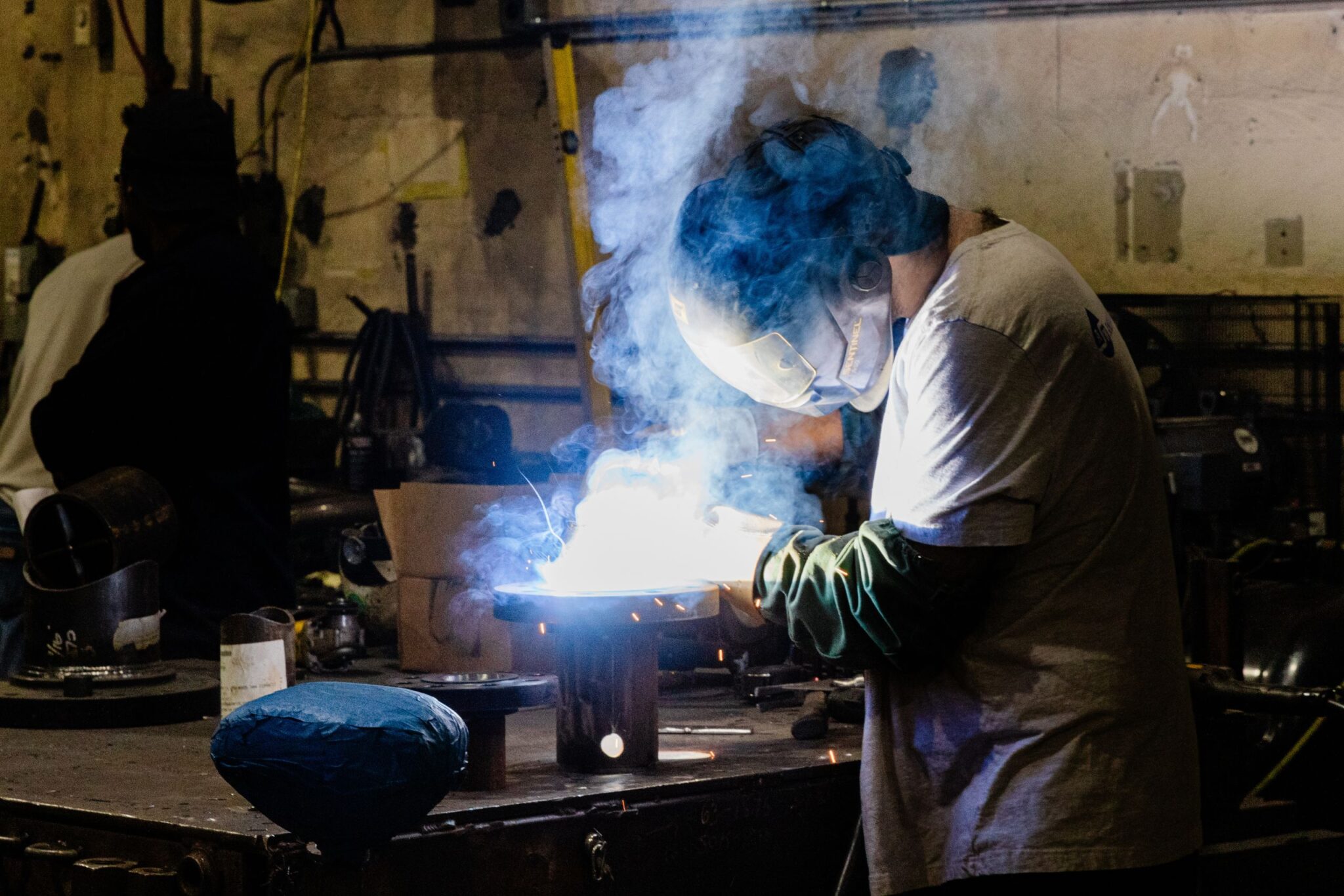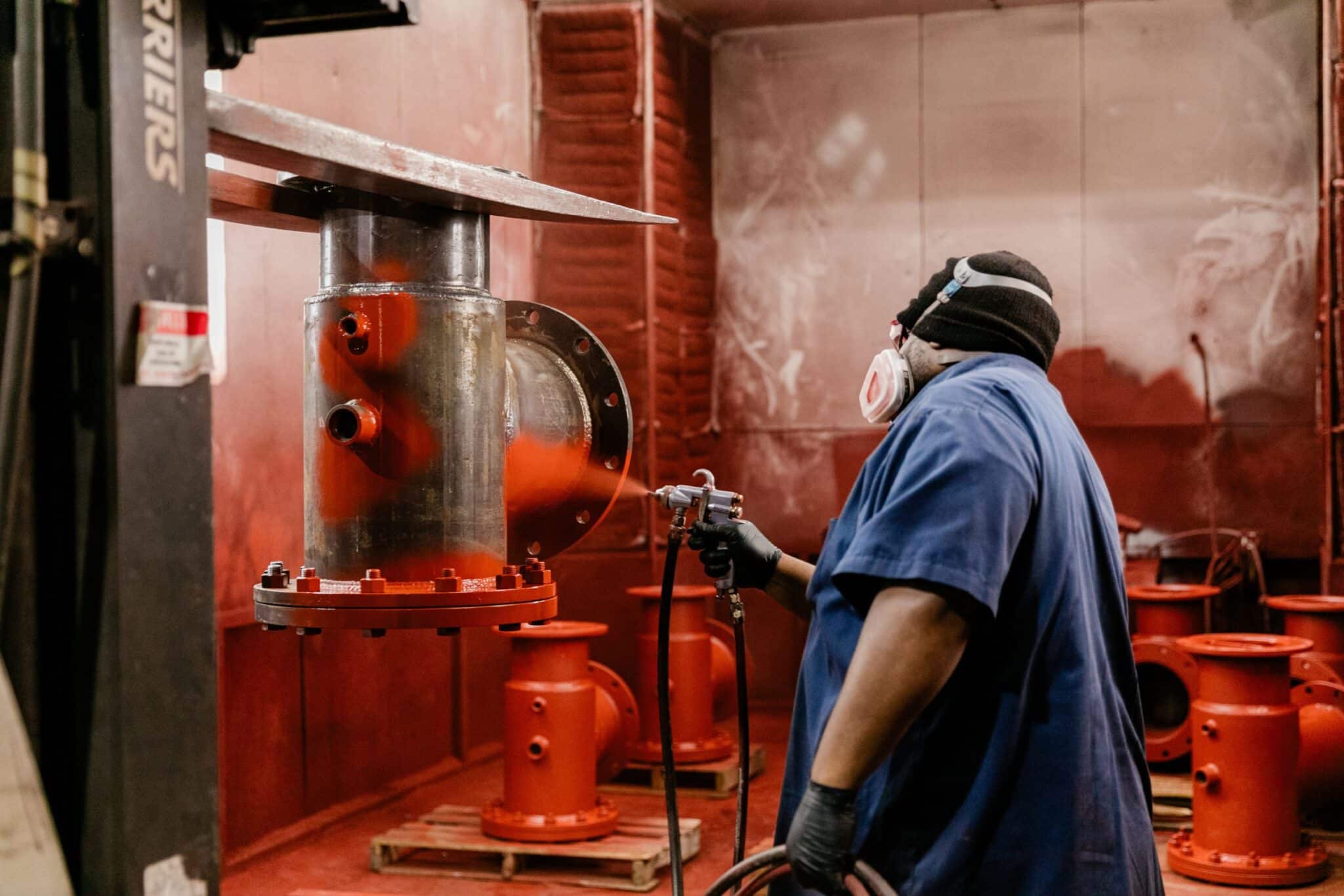Streamlining HVAC Projects Through Product Bundling
Streamlining HVAC Projects Through Product Bundling
When considering hydronic system bundling for your project, weighing the costs and benefits of consolidating your HVAC component purchases from a single manufacturer is essential. Bundling HVAC valves with hydronic expansion tanks, air separators, and other accessories can streamline your project, reduce costs, and ensure optimal performance. This article explains the advantages of bundling and how it can benefit your hydronic systems.

Benefits of Bundling HVAC Valves with Hydronic Tanks
Efficiency, cost-effectiveness, and streamlined operations are crucial in custom fabrication projects involving HVAC systems and hydronic piping. This guide explores the advantages of bundling hydronic valves, expansion tanks, air separators, and other components with American Wheatley.
- Cost Savings – Bundling HVAC components, such as shut-off valves, pump suction fittings, and expansion tanks, can lead to significant savings. Additionally, consolidating your purchases can minimize shipping costs and simplify ordering.
- Simplified Installation and Maintenance – Installation becomes more straightforward when all components are sourced from the same manufacturer. Bundled components are designed to work seamlessly together, reducing the risk of compatibility issues. This compatibility also simplifies maintenance, as technicians can quickly identify and replace parts from the same product line.
- Improved System Performance – Bundling ensures that all components are optimized to work together, enhancing the overall performance of your hydronic system. For example, appropriately sized expansion tanks and air separators help maintain constant pressure and eliminate air pockets, preventing inefficiencies. Matched components also reduce the likelihood of pressure changes and flow disturbances that can negatively impact pumps, heat exchangers, and other critical components.
- Streamlined Warranty and Support- When all components are purchased from a single manufacturer, warranty claims and technical support become more straightforward. Rather than dealing with multiple vendors, you’ll have a single point of contact for any issue. This streamlined approach saves time and hassle, allowing you to focus on your project’s success.

Benefits of Different HVAC Systems
Bundling HVAC components offers specific benefits for various types of hydronic systems.
- Chilled Water Systems – In chilled water systems, bundling ensures that all components, such as chilled water valves, expansion tanks, and air separators, are compatible and optimized for low-temperature operation. This compatibility minimizes the risk of leaks, improves energy efficiency, and prolongs the system’s life.
- Hot Water Systems – Hot water systems, bundling high-temperature valves, expansion tanks, and air separators ensure that all components can withstand elevated temperatures without compromising performance. Adequately matched components reduce the risk of system failure and improve overall efficiency.
- Steam Systems – Bundling steam valves, steam traps, and condensate return equipment optimizes the performance of steam systems. Consolidated purchasing ensures compatibility, minimizes the risk of leaks, and improves the overall efficiency of the steam distribution network.
Considerations for Bundling HVAC Services

Hot Water and Chilled Water Systems:
Temperature Considerations in Bundling
When bundling components for hot water and chilled water systems, it’s crucial to consider the temperature requirements of each component. Different components may have varying temperature tolerances, and ensuring compatibility is essential for optimal system performance. For example, when bundling valves and expansion tanks for a hot water system, selecting components that can withstand high temperatures is essential. Similarly, in chilled water systems, components must be able to handle the low temperatures without compromising functionality. By carefully considering temperature requirements when bundling, you can ensure that your hydronic system operates efficiently and reliably, regardless of the application.

Accommodating System Expansion:
Selecting the Right Piping and Connections
Hydronic systems are subject to thermal expansion and contraction as temperatures change. When bundling components, it’s essential to select piping and connections that can accommodate this expansion without putting undue stress on the system. Flexible connectors, such as braided stainless-steel hoses or expansion loops, can help absorb the movement caused by thermal expansion. Additionally, selecting the appropriate pipe size and material is crucial for ensuring proper flow and minimizing pressure drop. By considering system expansion when bundling components and choosing the appropriate piping and connections, you can create a hydronic system that is resilient, efficient, and long-lasting.

The Importance of Manufacturer Expertise in Hydronic System Bundling
When bundling hydronic system components, manufacturer expertise ensures optimal performance and compatibility. Reputable manufacturers, like American Wheatley, have the knowledge and experience to guide you in selecting the right components for your specific application. They can provide valuable insights into sizing, material selection, and configuration to ensure your bundled system meets your performance requirements. Additionally, manufacturers with a proven track record in hydronic system bundling can offer customized solutions tailored to your unique needs, ensuring a seamless integration of components. By leveraging manufacturer expertise, you can streamline your bundling process, minimize compatibility issues, and achieve the best possible results for your hydronic system.

Achieving Optimal System Performance:
Bundling and Proper Component Locations
To achieve optimal system performance, consider the proper location of bundled components within your hydronic system. Placing valves, expansion tanks, air separators, and other components can significantly impact system efficiency, pressure drop, and overall performance. For example, placing air separators at the system’s highest point can help remove air and maintain consistent system pressure. Similarly, locating expansion tanks properly can ensure effective pressure management and accommodate system expansion. By strategically bundling components and placing them in the optimal locations within your hydronic system, you can maximize efficiency, minimize pressure drops, and ensure reliable, long-term performance.

Proper Expansion Tank Sizing
Proper expansion tank sizing is crucial for maintaining consistent system pressure and accommodating thermal expansion in hydronic systems. The expansion tank size depends on several factors, including the total system volume, maximum operating temperature, minimum and maximum allowable system pressures, and the type of expansion tank (diaphragm or bladder style).
To determine the appropriate expansion tank size for your system, consider the following factors:
- System Volume – Calculate the total volume of water in the system, including the piping, boiler, and other components.
- Temperature Differential – Determine the maximum temperature differential between the system’s cold fill and maximum operating temperatures.
- Pressure Range – Identify the minimum and maximum allowable system pressures, considering the relief valve settings and the pressure ratings of the system components.
- Expansion Tank Type – Based on the system requirements and preferences, choose between a diaphragm-type or bladder-type expansion tank.
American Wheatley offers a comprehensive tank sizing calculator on their website to help you determine the proper expansion tank size for your hydronic system. By inputting the relevant system parameters, such as the system volume, temperature differential, and pressure range, the calculator provides an accurate recommendation for the expansion tank size and type.

Bundling Components for Optimal Performance
When bundling hydronic system components, consider each component’s specific functions and requirements to ensure optimal system performance. Some key components to consider include:
- Valves: Various valves, such as shut-off valves, balancing valves, and control valves, play critical roles in hydronic systems. Shut-off valves isolate sections of the system for maintenance or repair, while balancing valves ensure proper flow distribution throughout the system. Control valves regulate the water flow to maintain the desired temperature or pressure. When bundling valves, consider the valve material, size, and pressure rating to ensure compatibility with the system requirements.
- Expansion Tanks: Expansion tanks accommodate the thermal expansion of water in hydronic systems, helping to maintain consistent system pressure. Depending on the system requirements, they can be diaphragm-type, bladder-type, or compression-type tanks. When bundling expansion tanks, consider the tank size, pre-charge pressure, and connection type to ensure proper integration with the system.
- Air Separators: Air separators remove dissolved air from the hydronic system, preventing air pockets that can reduce efficiency and cause system damage. They are typically installed at the highest point in the system, where air naturally collects. When bundling air separators, consider the separator type (e.g., centrifugal or coalescing), material, and size to ensure effective air removal and compatibility with the system.
- Pump Suction Fittings: Pump suction fittings, such as suction diffusers and strainers, protect pumps from debris and ensure proper flow conditions at the pump inlet. They help maintain consistent pump performance and prevent cavitation. When bundling pump suction fittings, consider the fitting size, material, and strainer mesh size to ensure compatibility with the pump and system requirements.
By carefully selecting and bundling these components based on their specific functions and the overall system requirements, you can optimize your hydronic system’s performance, efficiency, and reliability.
Frequently Asked Questions
What types of valves and tanks can be bundled together?
American Wheatley can bundle various valve types (ball, gate, globe, check, etc.) along with full acceptance removable bladder tanks, air separators/eliminators, relief valves, and other hydronic accessories.
Can you bundle valves and tanks of different materials (brass, stainless steel, etc.) for the same system?
Valves and tanks made from different materials, such as brass, stainless steel, or iron, are available for bundling to meet the application requirements of bundled components.
How does bundling impact shipping costs and lead times compared to ordering items separately?
Bundling reduces shipping costs compared to multiple separate shipments. Lead times are also better coordinated.
Can replacement parts or maintenance items be added to valve and tank bundles?
For future maintenance, replacement items like valves, air vents, and tank fittings can be included in bundles.
Are there specific installation requirements for using bundled hydronic components together?
Hydronic design documentation from American Wheatley provides installation requirements and schematics for bundled components.
How does the warranty work when bundling products from the same manufacturer?
American Wheatley’s warranty covers all of their bundled components for the specified warranty period.
Partner with American Wheatley For Bundling Solutions
Efficiency, reliability, and quality are more important than ever. That’s why partnering with a trusted manufacturer like American Wheatley for your hydronic valve, expansion tank, air separator, and HVAC accessory needs is an intelligent choice. Bundling these components together will streamline your purchasing process, reduce overall costs, and ensure that all components work together seamlessly.
Bundling your HVAC components with American Wheatley is an investment in your project’s success. By leveraging our knowledge, experience, and commitment to quality, you can simplify your project management, reduce costs, and achieve the best possible outcomes for your hydronic systems.